Continued from Thailand – Laos Travel: Day 14 – Part 1 – Reviews of Chindamay Hotel. For pre-travel, please refer here.
From Chindamay Hotel to Patuxay, I can’t remember the fare.
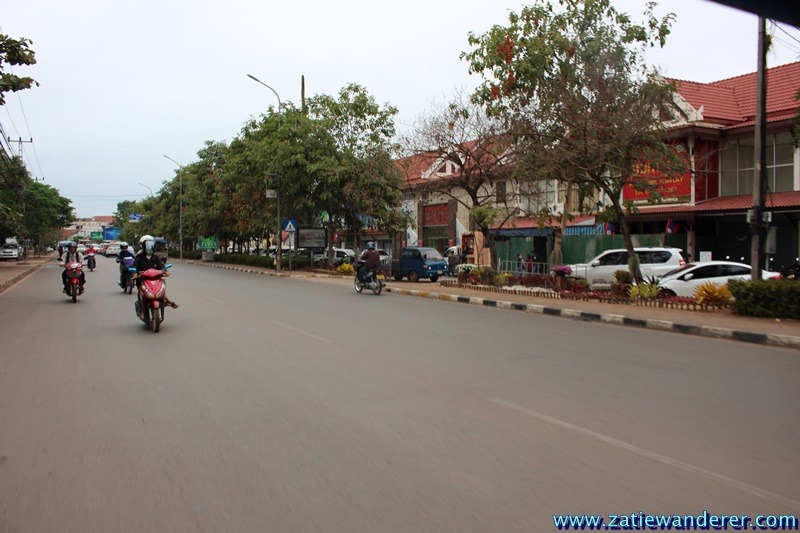
But it is not far, about 3 km only.
This is the face of a healthy person. Alhamdulillah. Thank God for still giving me strength in this foreign land. All because of strength for the sake of a beloved family.
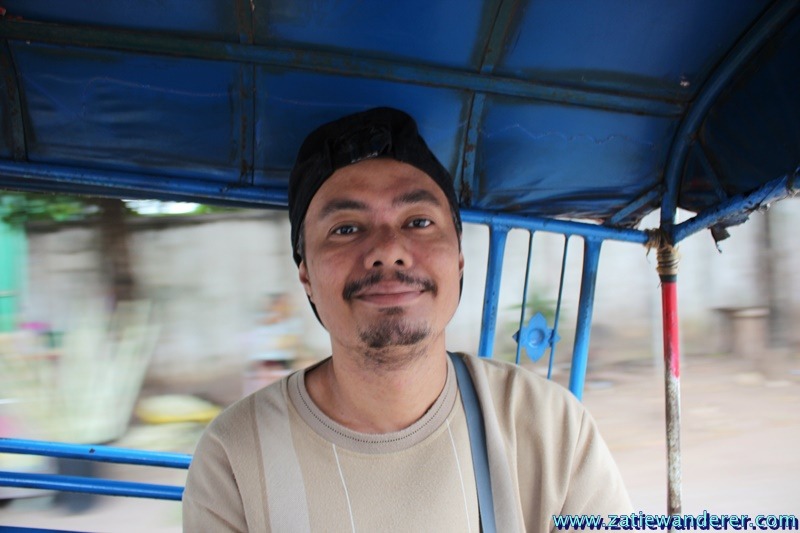
This is the type and shape of motorcycle tuktuk that we ride along in Vientiane.
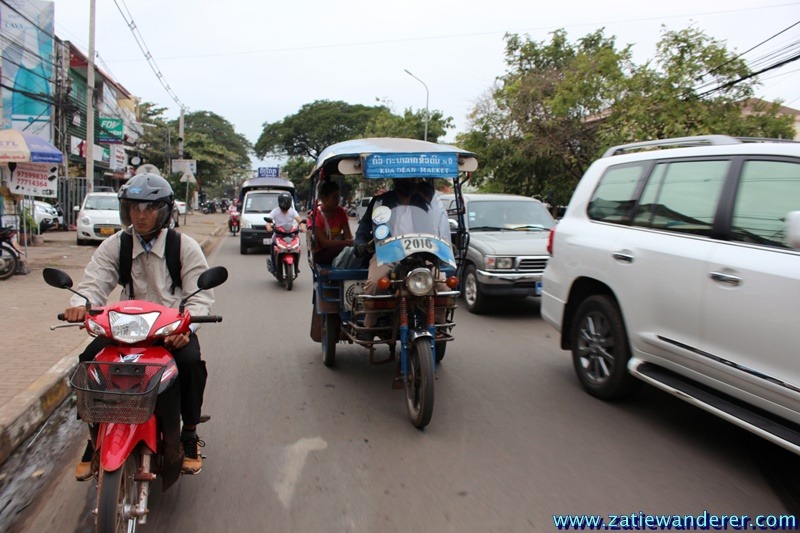
The city of Vientiane, the capital of Laos, or called Lao DPR which means People’s Democratic Republic. The population is only 820,000 people. And the whole country of Laos has a population of 7.5 million people.
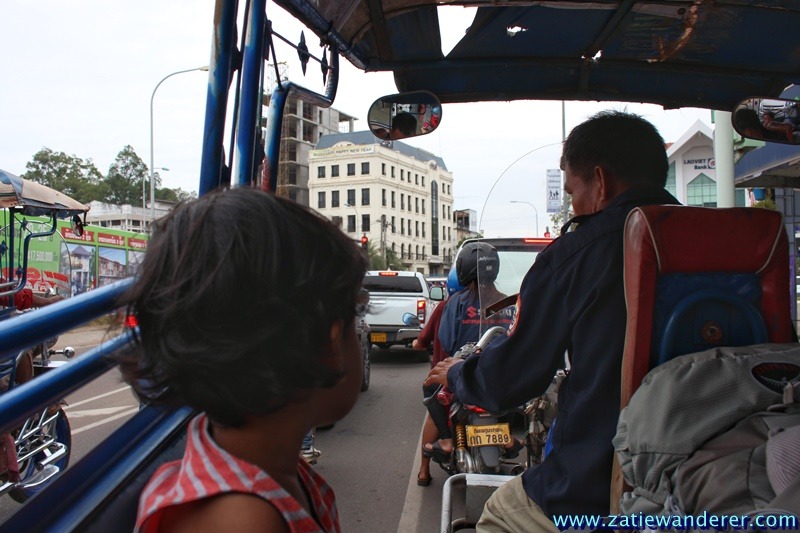
It is the quietest country, less dense and less crowded than all other ASEAN countries. A forested, dusty country, surrounded by 5 countries (China, Vietnam, Cambodia, Thailand and Myanmar), was once bombed from the air during the Laos civil war (1959-1975 which was also linked to the Vietnam war) amounting to 270 million bombs (highest in the world) and is one of the countries that has no beaches and oceans! That is why the Mekong River is like a beach for them to bathe and sunbathe.
From a distance we saw Patuxay.
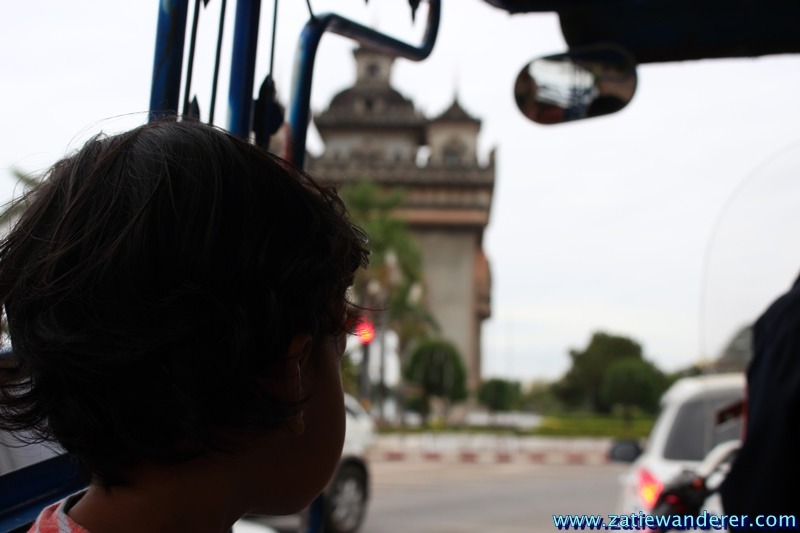
Patuxay (or spelled as Patuxai), which is a historical landmark of the city of Vientiane and also Laos as a whole.
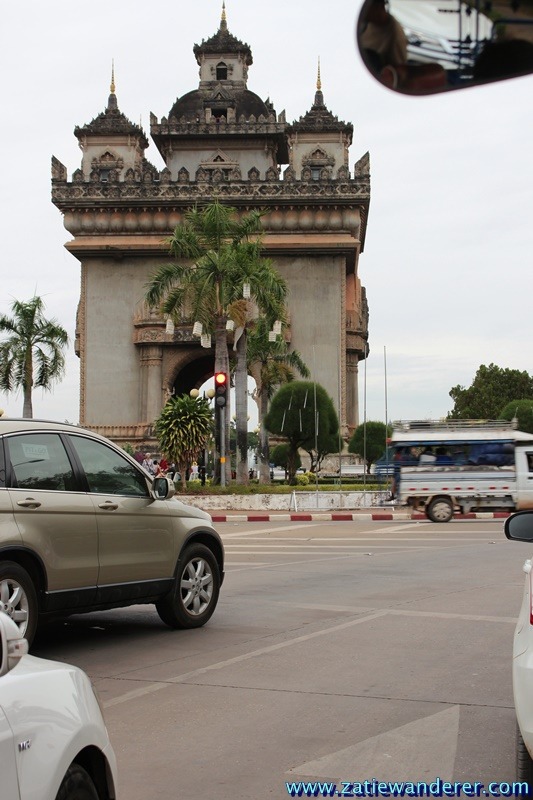
Tadaaaaaa! Finally, we got to Patuxay. The day before, I had a post on FB saying that I may have canceled my wish to come here due to health problems. In the end, we managed to come here.
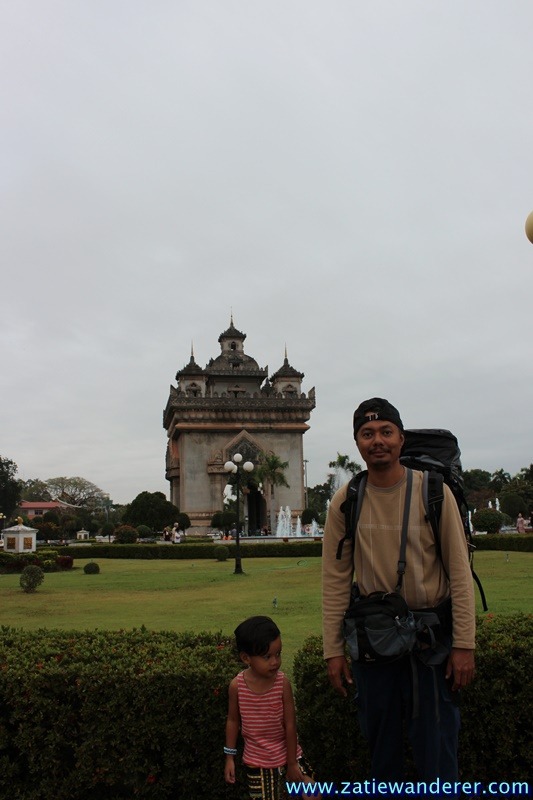
This place is indeed beautiful and unique for the category of history and old buildings or monuments. Just because this place is not in France and the temperature is not cold, it doesn’t mean this place is less attractive.
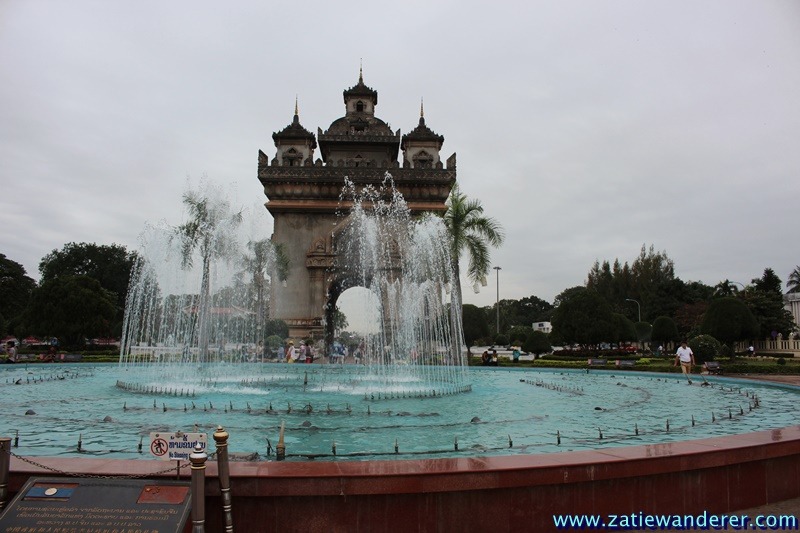
Patuxay which means Victory Gate or Gate of Triumph. Its building is dedicated to those who fought in the struggle for independence from France. In pronouncing the name from the Laotian language, it is transliterated as Patuxai, Patuxay, Patousai and Patusai. It is also called the Patuxai Arch or Arc de Triomphe of Vientiane because it resembles the Arc de Triomphe in Paris. However, it was built according to the suitability of Laotian culture, decorated with mythological creatures such as kinnari (half female, half-bird).
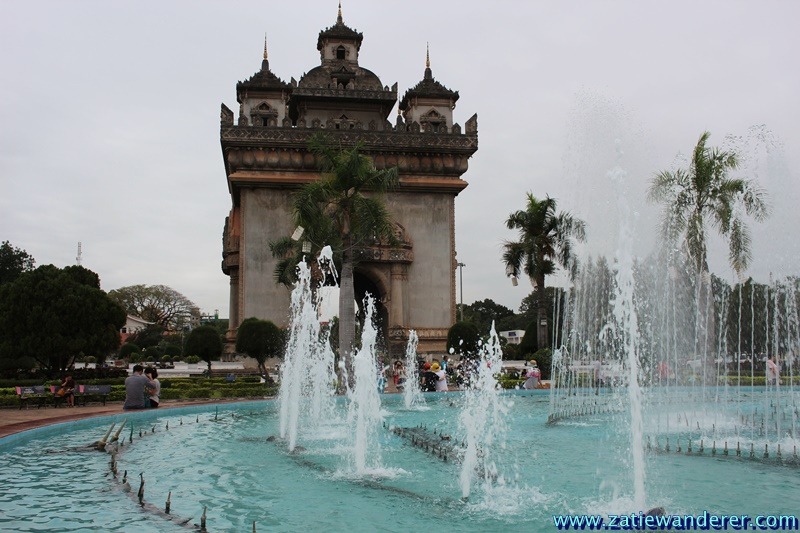
Patuxai is a compound word, ‘Patuu’ or ‘patu’ meaning “gate” and “Xai”, derived from the Sanskrit ‘Jaya’, meaning “victory”. Therefore it means “Gate of Victory”. Patuxai was built at a time when Lao history was in turmoil. It was built when Laos was a constitutional monarchy and was initially known only as “Anousavali” (“Monument”), as a special memorial to Laotian soldiers who died during World War II and the war for independence from France in 1949.
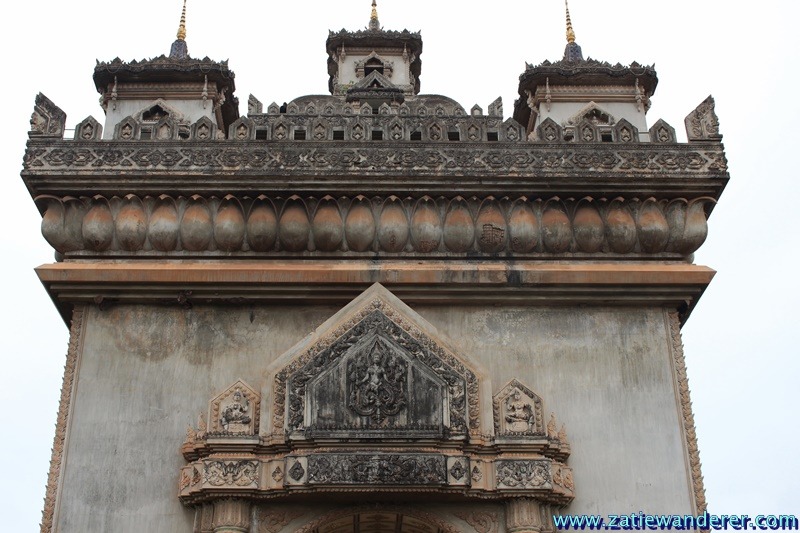
The monument was built using funds from the United States and its original cement was intended to build a new airport. The Lao government instead used cement to build this monument, which later got the nickname “vertical runway”.
The monument was designed by a Laotian soldier, who is also a talented former journalist and sculptor Tham Sayasthsena. In 1957, his construction plan was selected against applications submitted by the Public Works Department, the Military Engineering Department, and private architects. Tham received a fund of 30,000 kips for his work. The construction cost is estimated at 63 million kips.
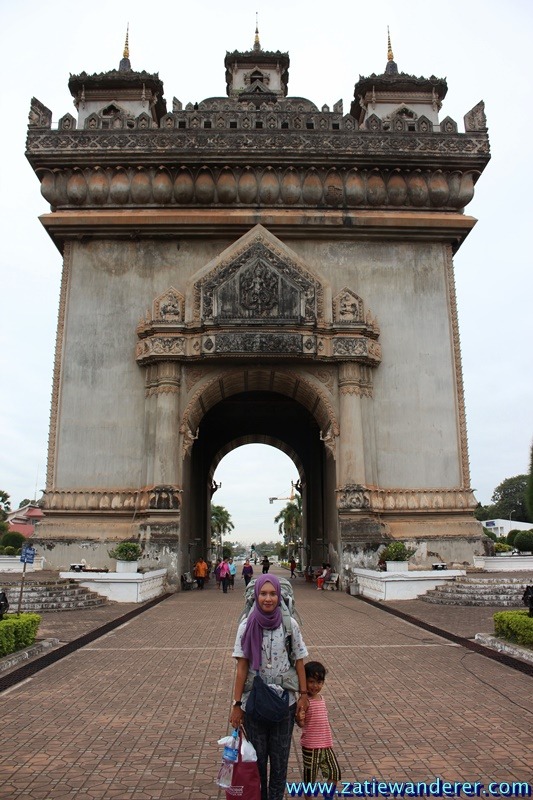
In May 1975, Pathet Lao’s communist party overthrew the coalition government and seized power, ending the ancient monarchy and appointing a new prime minister with a half-Vietnamese-blooded. They renamed the Patuxai monument in honor of the victory handed to them by the North Vietnamese Army.
The monument has five towers that represent the five principles of coexistence between the nations of the world. They also represent the five Buddhist principles of wise “virtue, flexibility, honesty, honor and prosperity.”
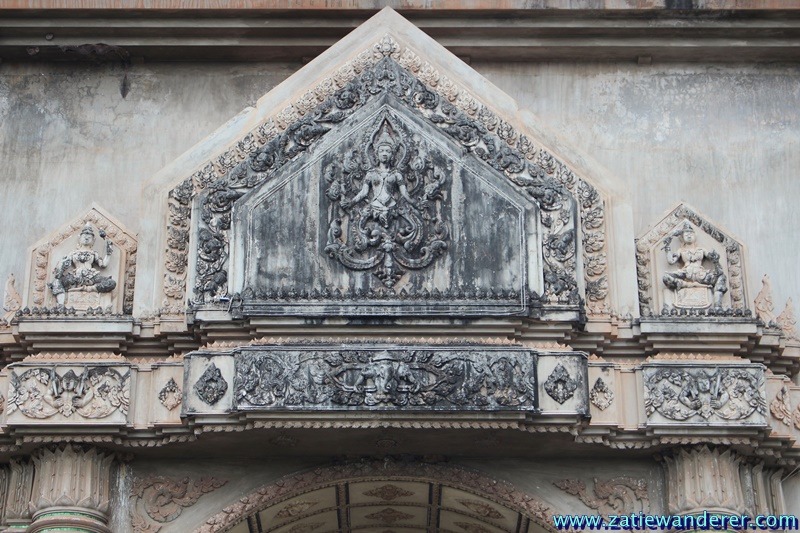
The monument has gates on four sides oriented in four cardinal directions. The East-West gate opens onto Long Xang Avenue, which is used during the national parade. In front of each gate, there is a pool. The four ponds represent the open part of the lotus flower (representing the homage of the Lao people to the brave warriors of the nation). The four corners of the entrance are decorated by a statue of the Dragon King (a mythical symbol of Laos), with an image marking a fountain (indicating nature, fertility, well -being and happiness) towards a pond that is on the ground.
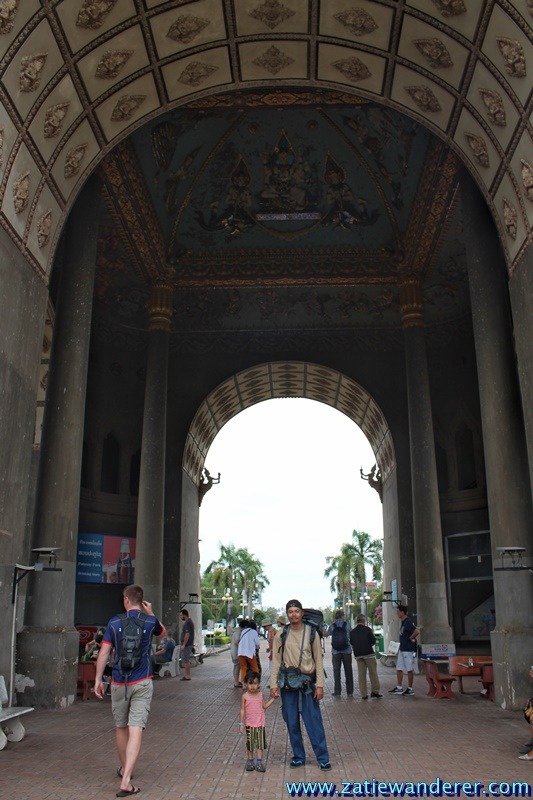
After climbing this staircase, there are two spiral staircases made of concrete from inside the main structure, passing through each floor, to the top of the monument. The exhibition gallery is located upstairs. The first floor has a monument management office; stalls dealing with tourist equipment (artifacts, souvenirs and snacks) are also located on this floor. The second floor is an important area where there is a museum, displaying statues and photographs of the country’s famous heroes.
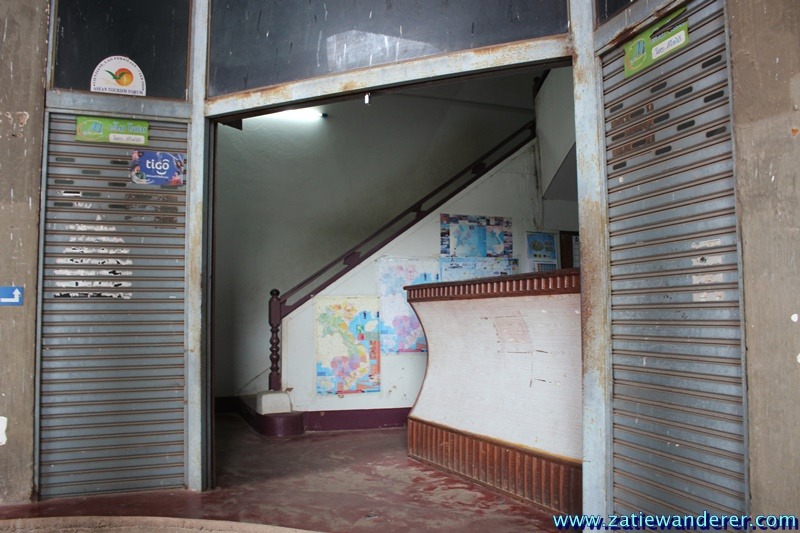
Entrance fees is not expensive. As far as I remember, less than MYR3.00 for adults. We were here on a Tuesday and not many visitors. When queuing to buy tickets, there were less than 5 people. Probably more on weekends.
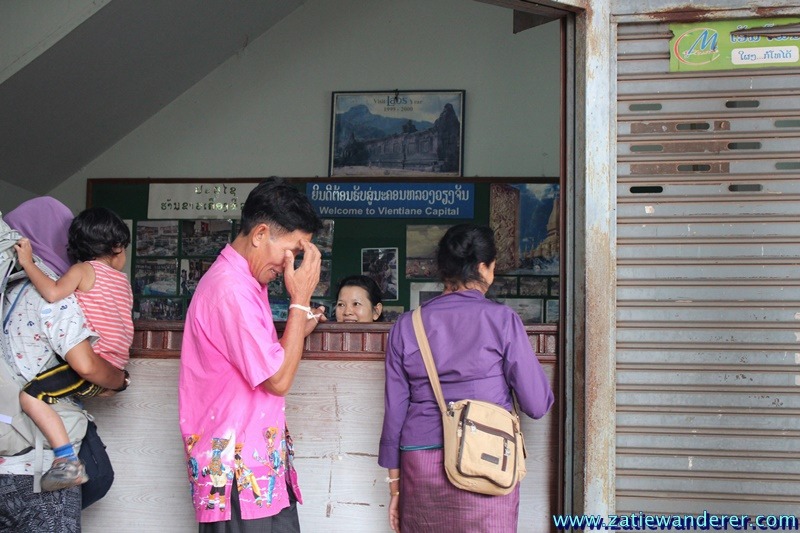
Can’t you see where I am? It’s a pity that I can’t go up. So, I just rested on the bench provided here while taking care of our backpack. Importantly Tatie and Aqif were entertained to be able to climb to the top.
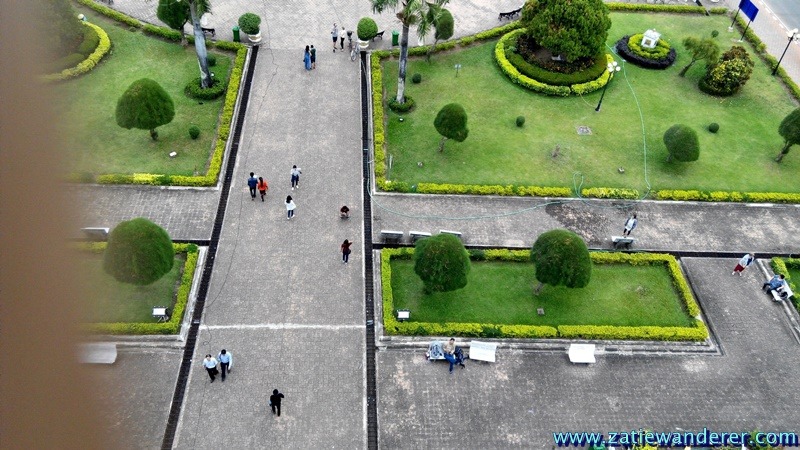
The musical fountain system installed in this newly built elegant garden was donated by the Chinese government. This is a popular feature for visitors and locals who visit the monument in the evening.
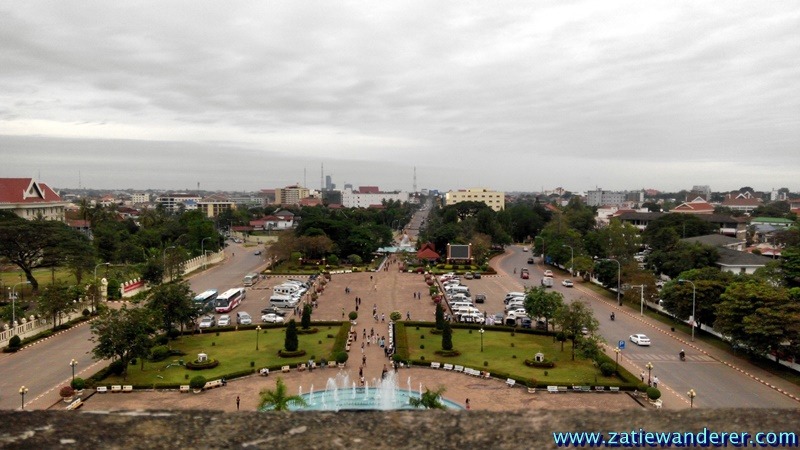
The next floor is an open space where four towers are built at four corners. The tower has been decorated with foliage murals. The tower is also equipped with electric lights, which are turned on during national days and other important festivals. The small towers, with temple-like decorations, are built in the Lao style and are equipped with towers. Each tower has a staircase.

Apart from the four corner tower, there is another larger central tower (not the tower in the picture above) on this floor, which also has a staircase leading to the top floor that has a platform for viewing panoramic views of Vientiane city.
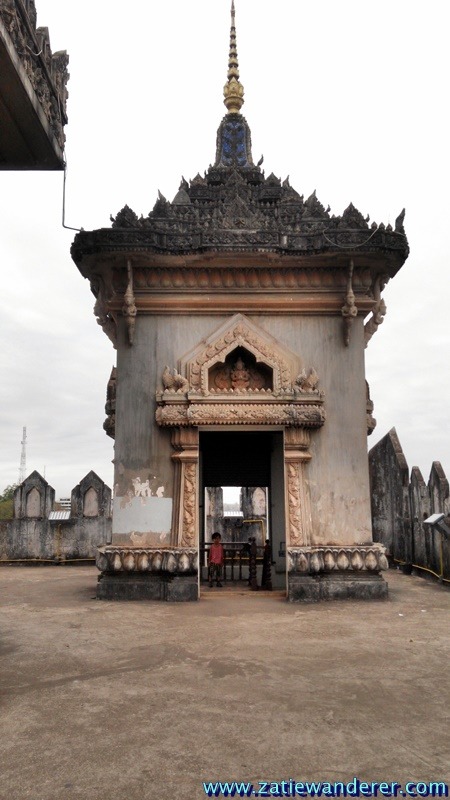
And the picture above is the top level. To go up , it is necessary to use the wooden ladder provided.
And you can enjoy the view of almost 80% of the whole city of Vientiane.
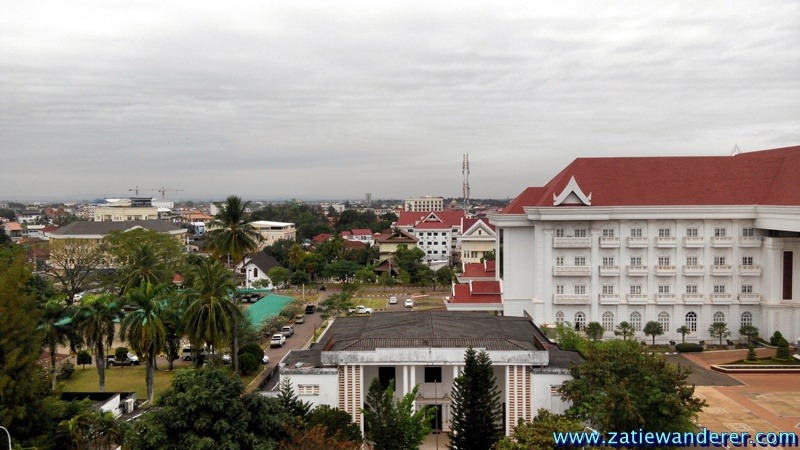
The white building is the office of the Prime Minister of Laos similar to Putrajaya in Malaysia. It was a loss not to take a picture in front of the entrance because I could not see the surrounding area more clearly through Google Maps. All because of not buying prepaid sim cards and relying on offline maps like MAPS.ME and Here Maps.
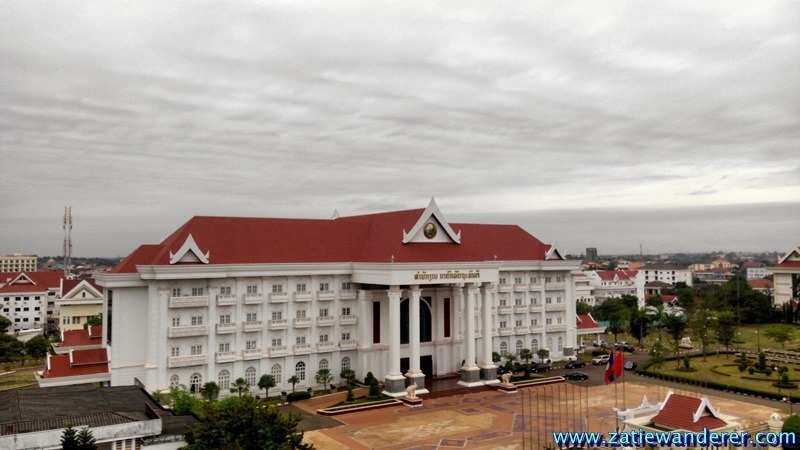
Panorama around the city of Vientiane. If you notice, few or no tall buildings exceed 12 floors here.
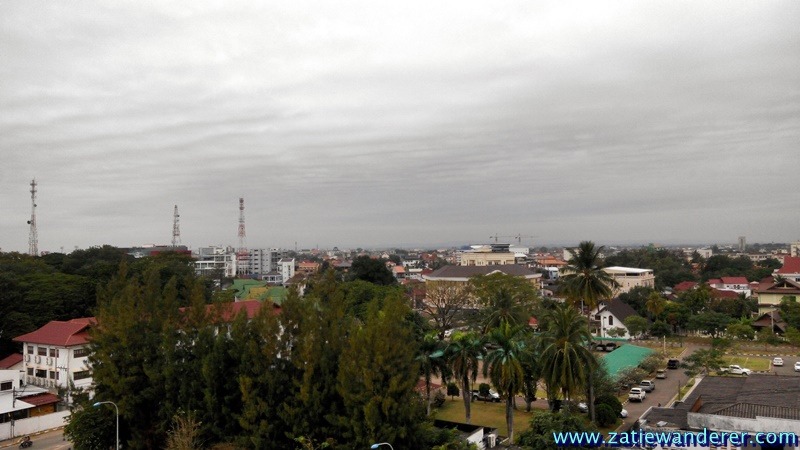
From behind Patuxay, which is from the direction we came in at first.
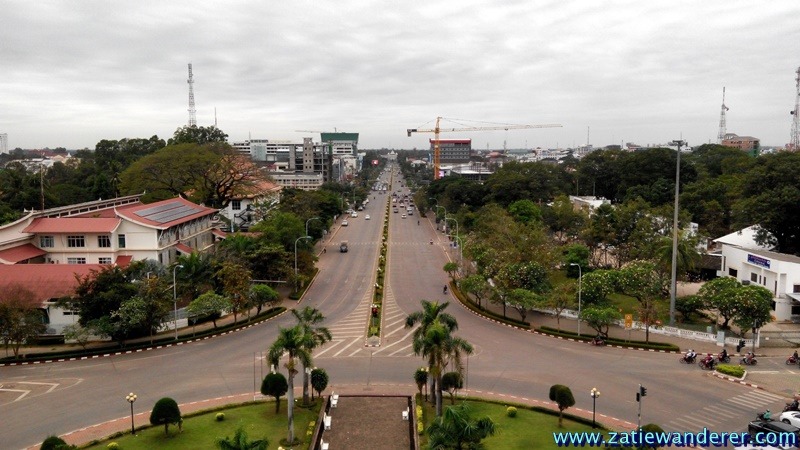
On Tuesday, which is a working day, the main roads here are not congested. Unlike other major ASEAN cities.
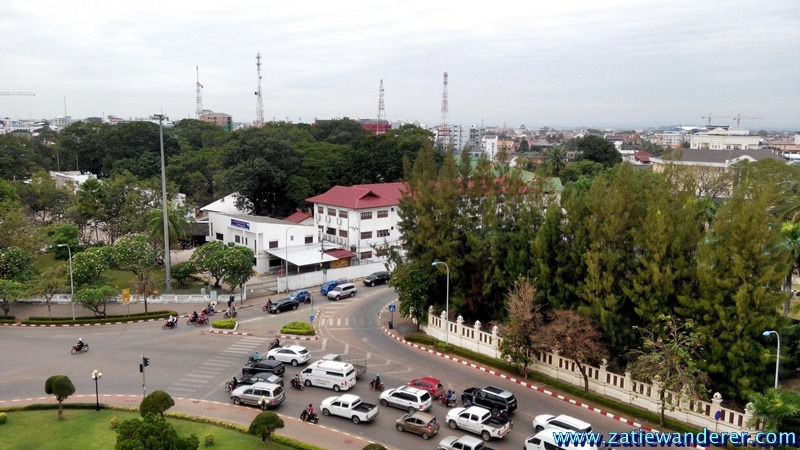
Haa .. there is also a tall building more than 12 stories at the end there that is white and has a round dome.
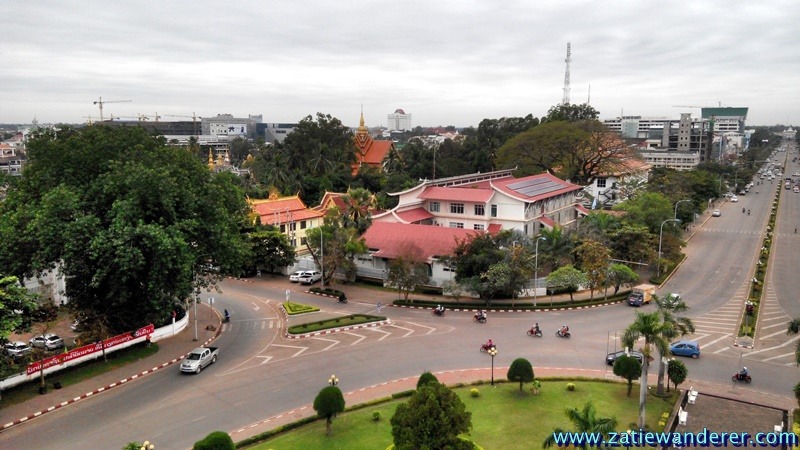
Telescopes are also provided on this floor for viewing.
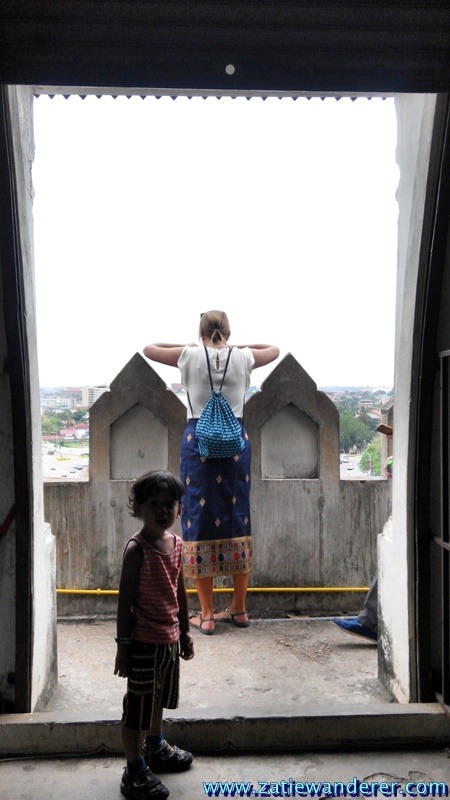
See the panorama of the city through the crevice of the Patuxay built rock which has been started in 1957. The height of the walls for children under 5 years old is safe here.
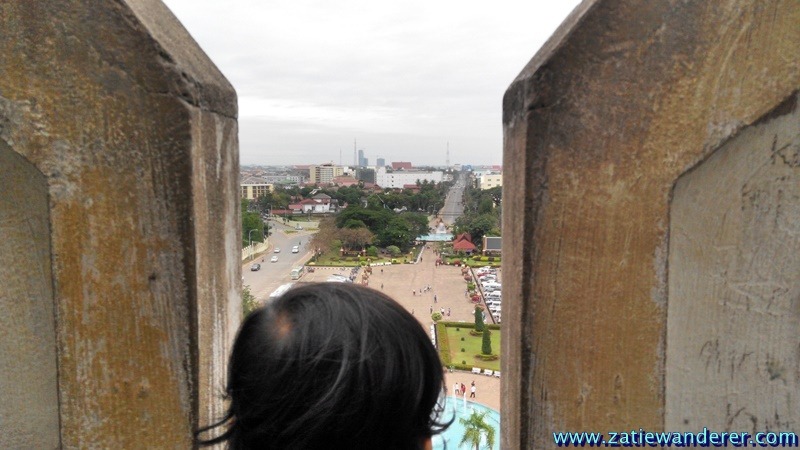
They were the two people ‘chosen’ to go inside and ride over Patuxay. Lucky.
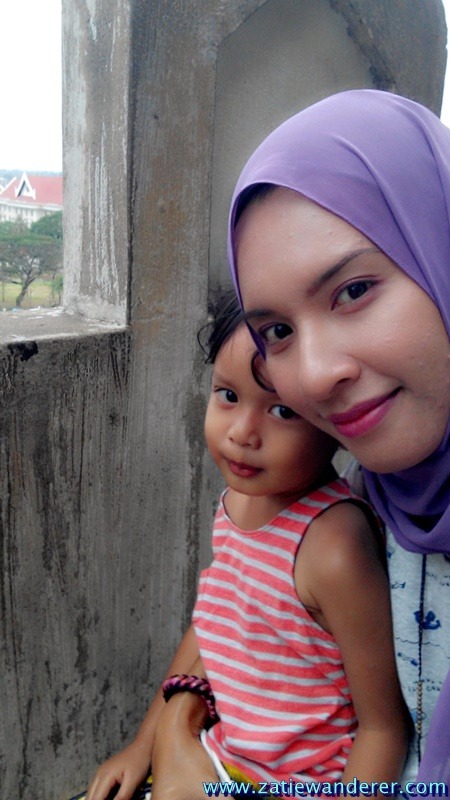
One of the three branches of a tiered pyramid-shaped dome was built on its roof.
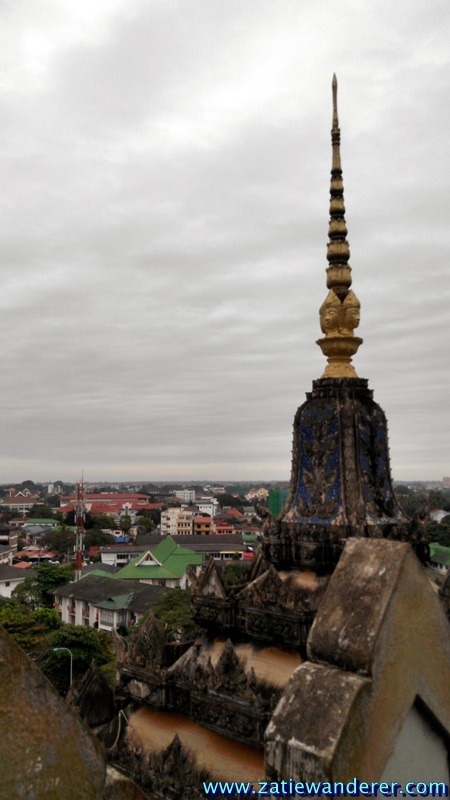
This monumental building is actually not fully completed to date, although the Lao government has repeatedly allowed new funding. Probably because this building is considered perfectly built and does not need any further improvement.

This is from the point of view through my Canon EOS camera taken from below and zoomed to the end (18-55mm). Tatie and Aqif were seen waving at me.

It took them a while to get upstairs, about half an hour. Inside there is a special floor that showcases the sale of souvenir items and it is mandatory to go through it while going up and down. For history lovers, architects and sculptors, this is an interesting place for you.
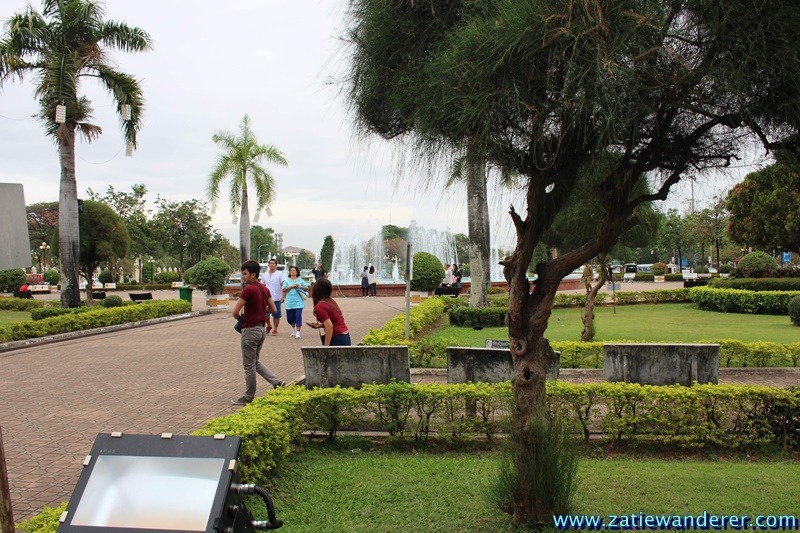
Meanwhile, I examined the public park here which can be considered similar to the public park in front of Suria KLCC in Kuala Lumpur. Each has its own uniqueness and not the size of the area that is measured.
After this, we will continue to cross the border to Thailand without going to other places around Vientiane. But it was a bit of a loss because we couldn’t visit (the top list is the most popular):
- Great Sacred Stupa (Pha That Luang)
- Wat Si Saket
- Mekong Riverside Park / Chao Anouvong Park
- Sisaket Temple & Museum
- Wat Si Muang
- Ho Pra Keo
- Black Stupa (That Dam)
- Lao National Museum
- Lao National History Museum
- Presidential Palace
- Wat Mixay
- Lao People’s Army Museum
- Lao Textile Museum
- Vientiane City Pillar Shrine
- Morning Market
- MAG UXO Visitor Centre (exhibition of bombs during the first war)
- Nam Phou Fountain / Namphou Circle (beautiful at night)
- People’s Security Museum
Follow the next blog post for crossing the border to Thailand again!

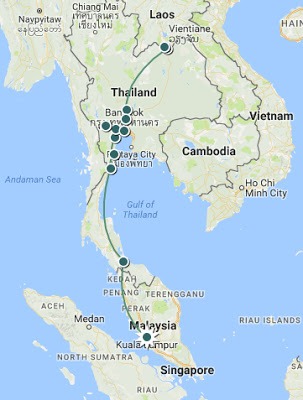
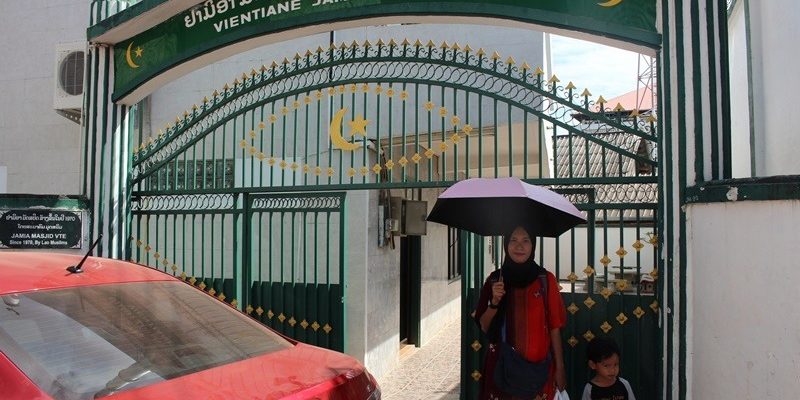
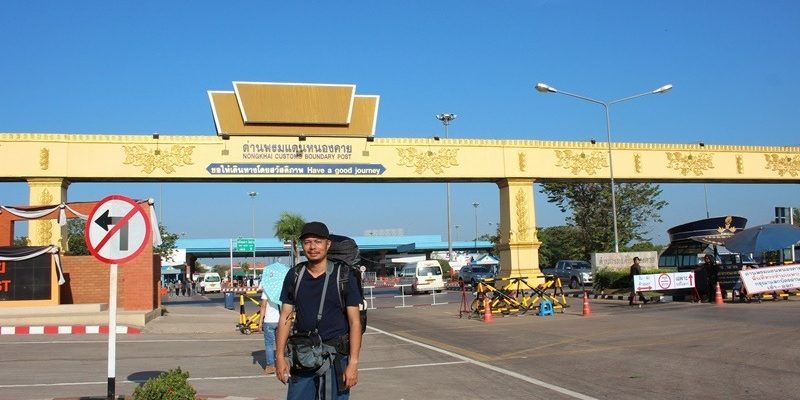
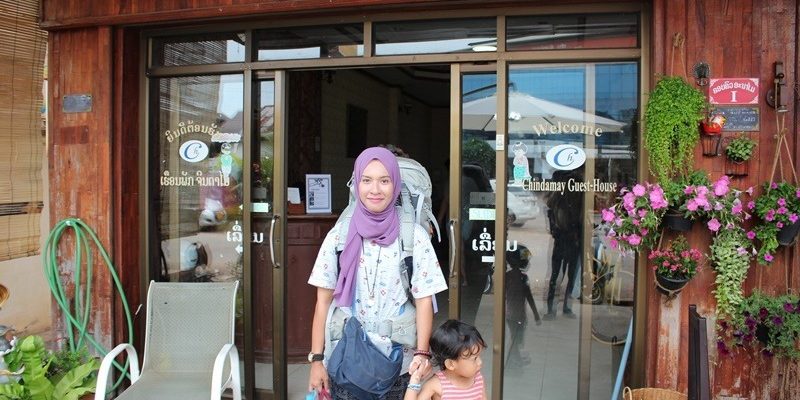
Leave a Reply